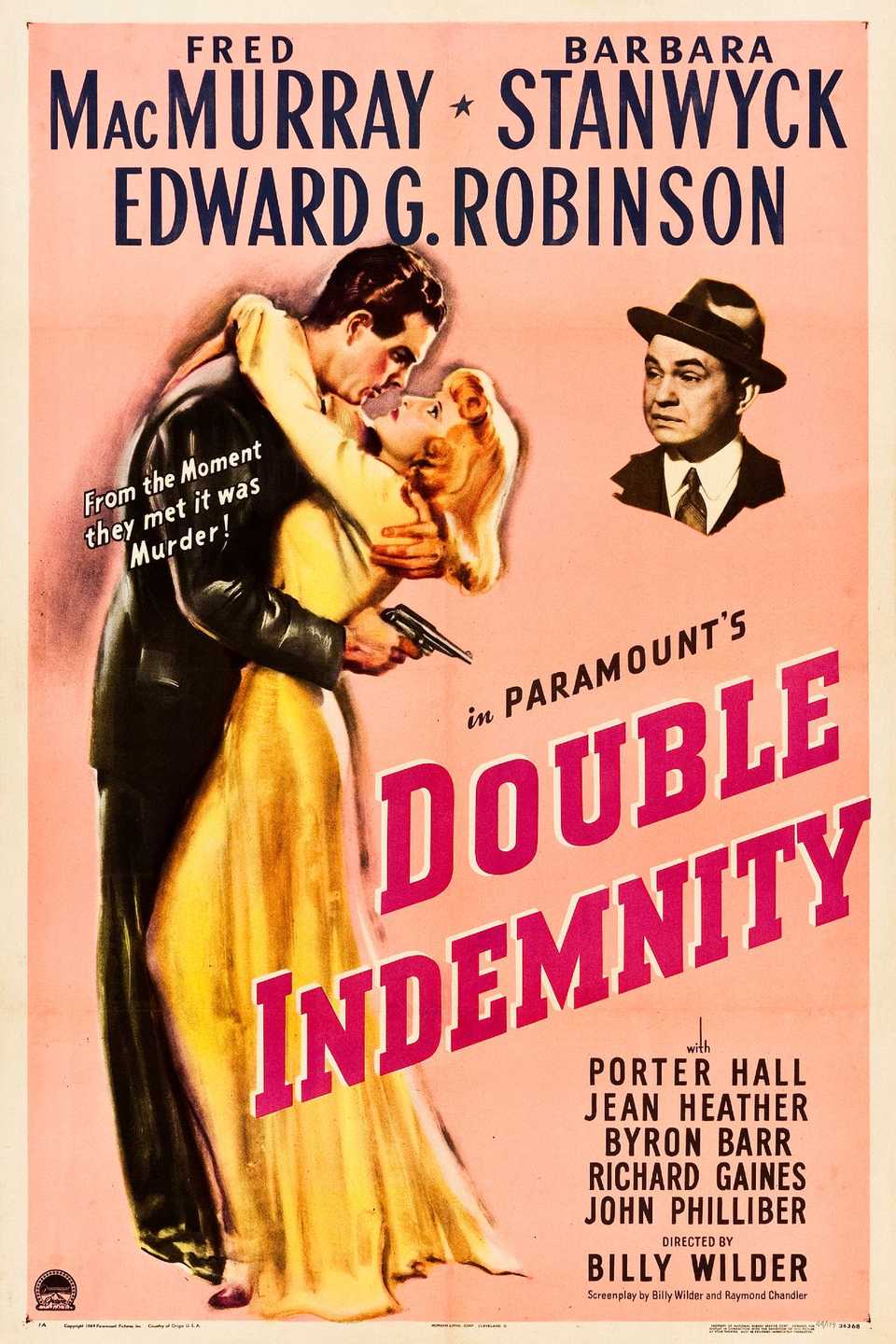
Various cinematic waves have been able to capture the essence of the specific time and social landscape on which they’re reflecting. Perhaps no wave has been as influential as the noir period of the classical era of cinema. Whether in Germany, France or the United States, noir cinema is an essential piece of film history and the films that came out of the period remain some of the most compelling crime films and thrillers of all time. Of all the stylish and thematically complex noir films that were made in Hollywood, only a select handful are considered masterpieces and true staples of the cinematic wave. Whether talking about The Maltese Falcon, Out of the Past or The Lady From Shanghai, there are very specific classics that continue to be some of the most resonant and most entertaining films utilizing the style.
Commenting on the state of society in post-war landscapes, these titles heighten the darkest anxieties of humanity in order to tell riveting tales of crime and corruption. With a myriad of distinct tropes and stylistic elements that came to define the noir period, filmmakers everywhere made full use of the form and told impeccable stories in the process. Of all the iconic noir films that came out in the prolific ’40s Hollywood period, there’s an argument to be made for Billy Wilder’s Double Indemnity being the greatest masterpiece ever. Wilder is one of the greatest filmmakers of all time, and he made a number of different kinds of films throughout his career. Still, his 1944 film is a favorite of many of his fans, and to this day, it also remains one of Stephen King’s favorite films.
Double Indemnity Is a Brilliant Depiction of WWII American Existentialism
From the opening frame of Double Indemnity, audiences are exposed to a single character’s choices and regrets as he lies dying and reflecting on the mistakes of his past. There’s an overwhelmingly darkened tone and desolate atmosphere that comes to define the film. Telling the story of a man’s ambitions, desires and greed, Double Indemnity plays heavily on the themes and tropes that came to define the noir films of the ’40s. Most noticeably, director Billy Wilder is putting his own spin on the idea of a disillusioned protagonist by leaning heavily into his selfish motivations, mainly driven by lust and greed.
When Walter Neff (Fred MacMurray) is put on a recent insurance case, he becomes infatuated and eventually obsessed with his client’s duplicitous wife, Phyllis Dietrichson (Barbara Stanwyck). On display are noir elements such as existentialism, desperation and malevolence, which come heavily in the form of the conventional noir archetype: the “femme fatale.” Of course, Double Indemnity is much more layered than it appears on the surface.
For starters, Wilder’s characters are framed in a despicable light, especially since each of them doesn’t need what they pursue, as Walter has a decent job and decent life, while Phyllis can remain as wealthy as her husband so long as she is willing to remain a loving and faithful wife.
However, Wilder knows that it’s not easy for people to remain complacent in routines or situations that leave them unfulfilled. Driven entirely by selfish desires, the two main characters get entangled in a criminal conspiracy together that involves murder and larceny. While playing out like any other noir film, Double Indemnity is masterfully constructed, beautifully directed and well-performed. It does what many noir films do, but did many things first or did many things better.
What’s most resonant about the 1944 crime thriller is its ability to embody the emotional and psychological state of society through its narrative. Walter Neff represents many other Americans during a WWII landscape that includes financial uncertainties and a looming feeling of existential dread that has come to consume society. This atmospheric and thematic tone is a huge element in many noir films, with the only difference being whether a film takes place during the war or after it.
Civilians were filled with despair, paranoia and overwhelming fear, which would naturally lead to thoughts and actions that were anything but. With the state of society in such an upheaval, characters very easily decide to shake up their routines if it means a better life. With two of the most connective characters of the ’40s, and one of the most riveting stories, Double Indemnity quickly became one of the great masterpieces in American cinema.
Double Indemnity’s Dark Tones Make It One of Stephen King’s Favorite Films
Very recently, Stephen King revealed what his top ten favorite movies of all time are. That’s a hard list for anyone to narrow down, and it probably changes from time to time, considering how effectively films can encapsulate specific moods or periods of time in people’s lives. Nonetheless, fans were most surprised by the lack of horror films on King’s list. While he gets close with films such as Jaws and Close Encounters of the Third Kind, it’s surprising that not one pure horror film cracked his top ten. Being the master of horror doesn’t necessarily mean that other genres don’t provide the kind of tones and themes that Stephen King is looking for.
Essentially drawn to the desolate themes of specific films, King’s list includes elements of horror that might exist in other kinds of films. A masterful noir crime thriller being in his top ten comes as no surprise when considering Double Indemnity’s darkened tones and existential backdrop. Walter Neff is a doomed man from the minute that audiences meet him, representing a heightened state of anxiety that existed in 1944. Human beings create their own dread, and that is what Billy Wilder is putting on full display with his characters. Walter and Phyllis are no different from anyone else who becomes consumed by their own fantasies of what they need, want, are or should be.
This is very evocative of a society that believes their problems come from similar fantasies, obligations and actions that led to a war-torn sociological state. Credit goes to Wilder and screenwriter Raymond Chandler for being able to adapt a 1927 novella into a relevant social and psychological representation of 1944 American situations. From there, the film becomes a compelling crime mystery that takes audiences on a ride and never lets off the gas.
Aside from the performances of MacMurray and Stanwyck, the film also features another brilliantly effective Edward G. Robinson performance as Keyes. While Walter becomes consumed by his selfish desires, Keyes does everything that he can to help Walter avoid it. It ends up being too late by the time Keyes gets involved in Walter’s final actions.
What pulls Stephen King into the film is what pulls most audiences in. The film boasts a riveting concept and creative structure that infuses the film with its underlying tone from the very beginning, which remains consistent throughout the story. When considering the challenges that Wilder and Chandler faced when adapting the novella, it’s an incredible feat to have the film turn out to be such a success and one of the key front-runners at the Academy Awards in 1944. Maintaining its tonal and thematic identity, audiences were compelled and disturbed by what plays out in Double Indemnity, and any film that can do that is going to have an impact on Stephen King.
Double Indemnity Inspired Some of Stephen King’s Novels
While primarily known as a horror novelist, King has dabbled in other genres before, including a detective trilogy that has been dubbed the Bill Hodges Trilogy. While the books contain elements of horror and mystery, they also capture an energy and tone that is very similar to the noir films that were being made in the ’40s. Many of the greatest noir films have a resonance that seems to maintain throughout each generation. While classical Hollywood films are not always guaranteed to have a lasting impact, noir films seem to represent an element of society and humanity that’s generational.
No matter when audiences discover noir films, they always seem to reflect the current landscape in some way. It says a lot about the state of humanity that an overwhelming sense of dread seems to permeate many specific periods. This keeps detective stories in general very relevant, and Stephen King’s Hodges books are especially riveting and reflective of the darkest human themes. While it hasn’t been officially stated, fans can see the similarities in these books to classic noir films, and King’s favorite one of all, Double Indemnity.

- Release Date
-
July 3, 1944
- Runtime
-
107 Minutes
- Director
-
Billy Wilder
- Writers
-
Billy Wilder, Raymond Chandler
Source link





